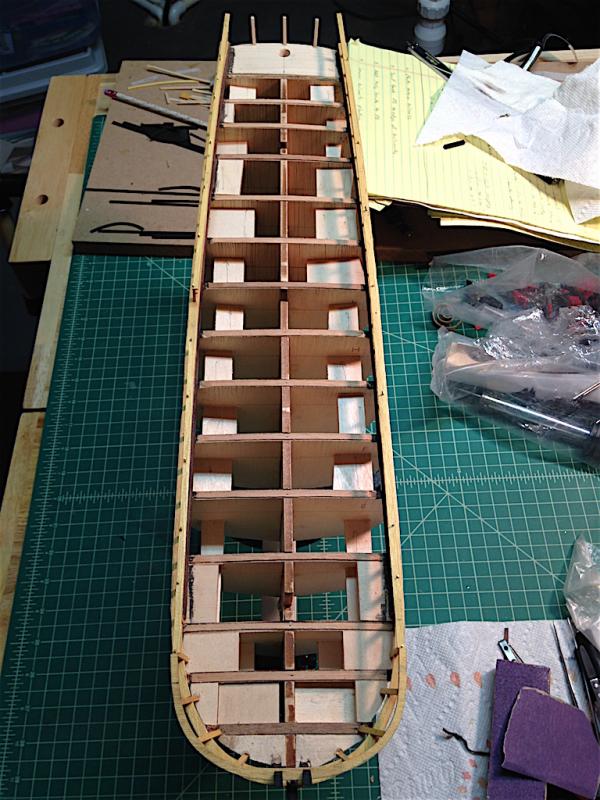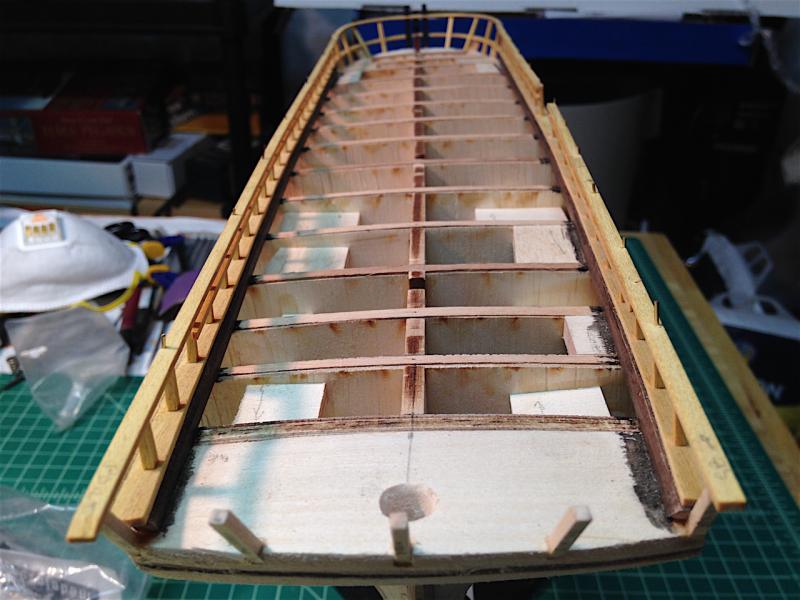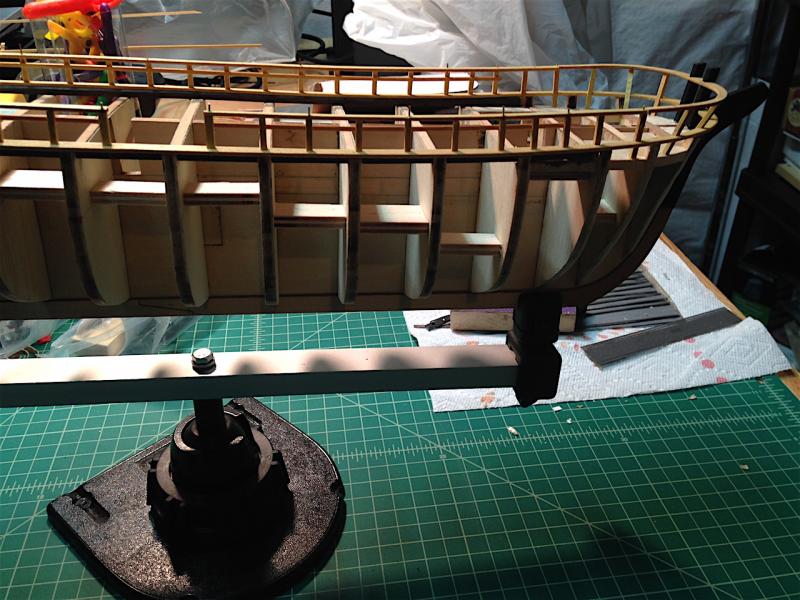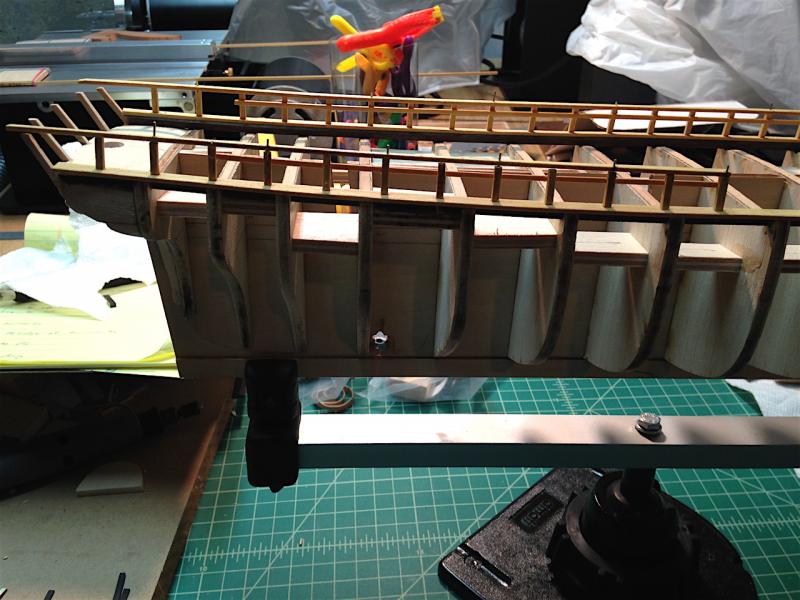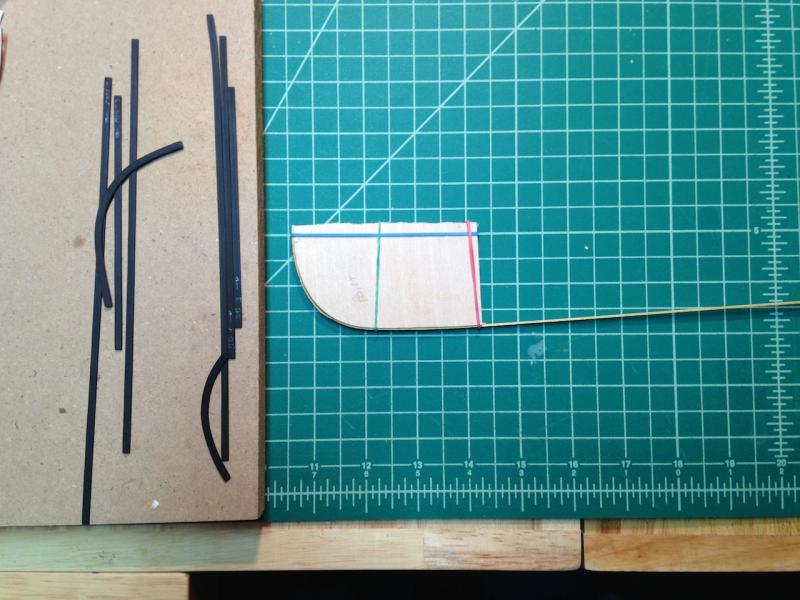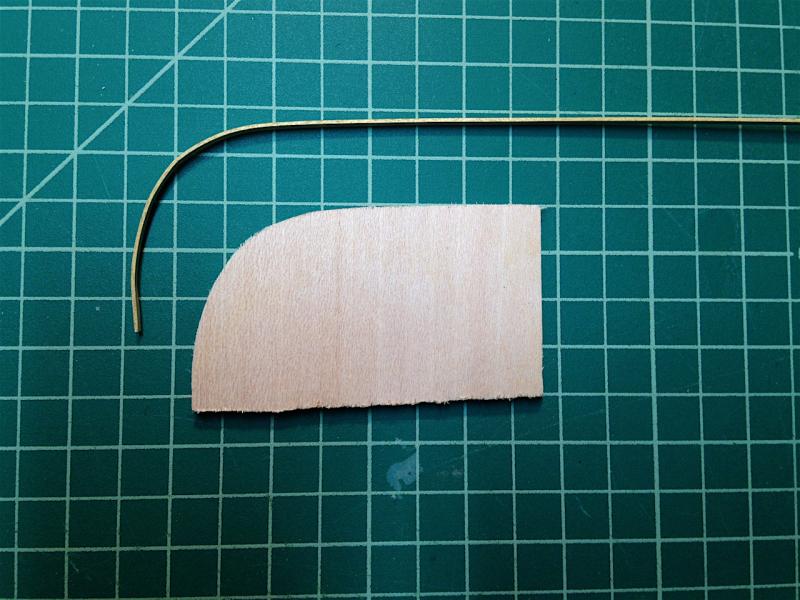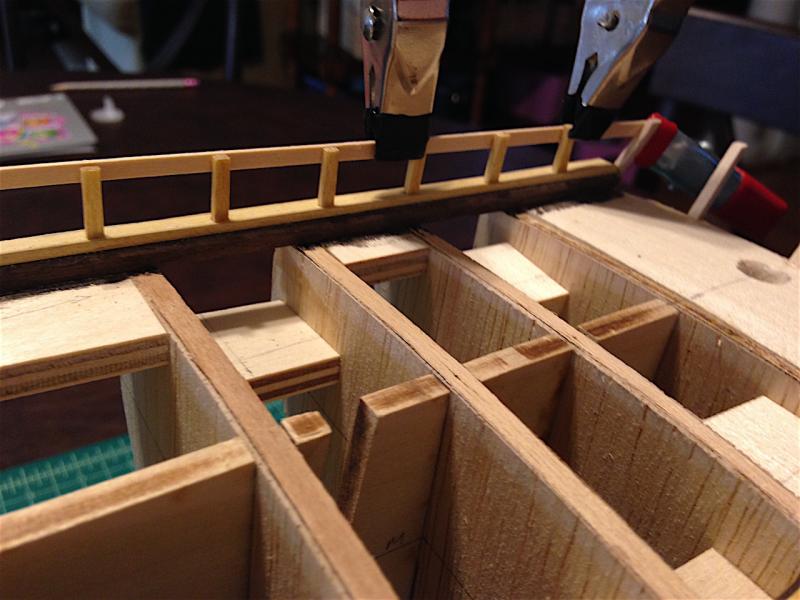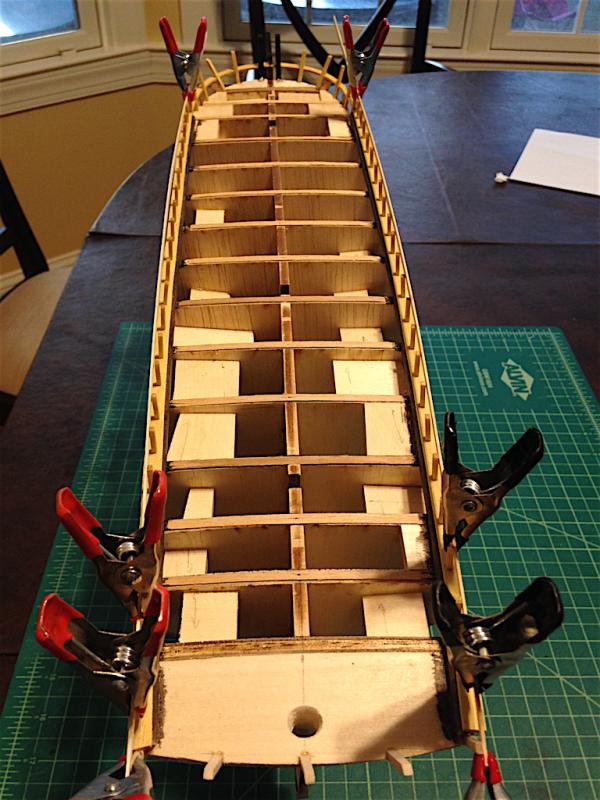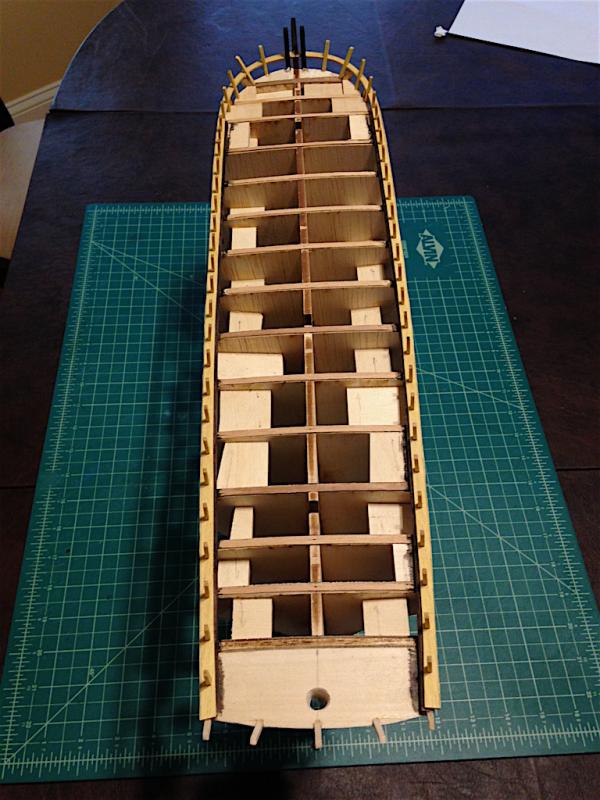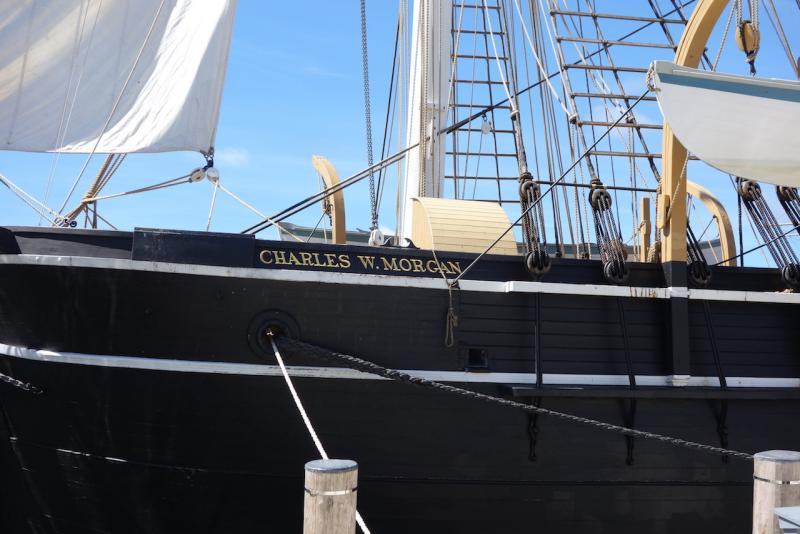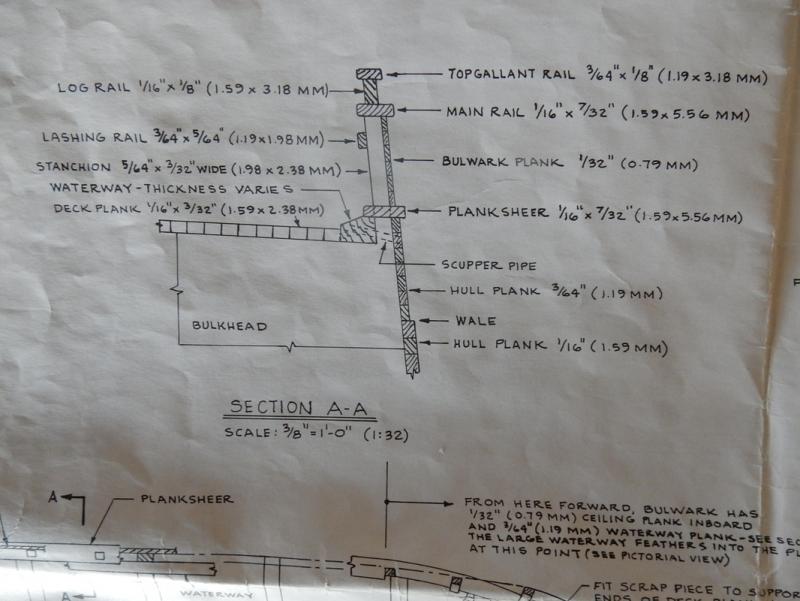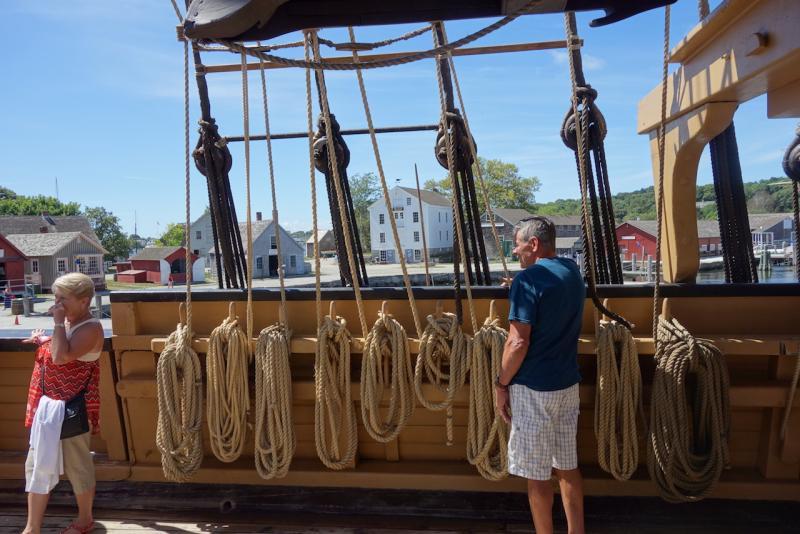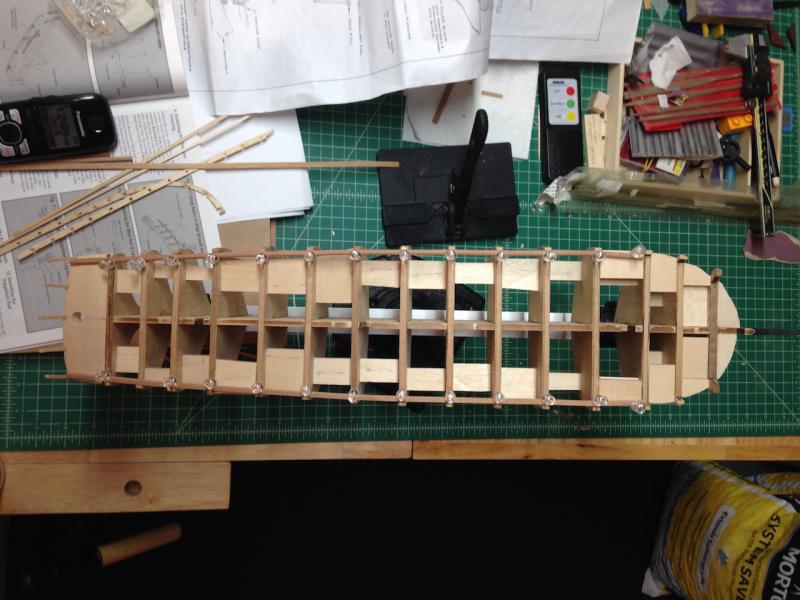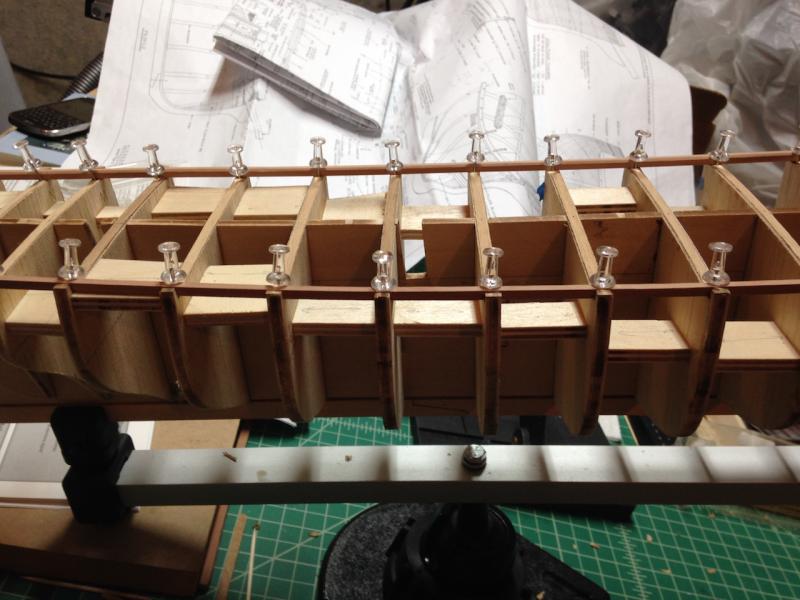-
Posts
4,508 -
Joined
-
Last visited
Content Type
Profiles
Forums
Gallery
Events
Everything posted by Landlubber Mike
-
Hey Charlie, looking fantastic. Lots of interesting planning and techniques, thanks for sharing! I've also been doing a lot of experimentation with various woods, stains and finishes on my various logs. I haven't tried holly yet, but I've read that holly does tend to take a yellowish tone with certain finishes. I think a quick search of logs on here and you can find out what finishes people tried. I would think that most oils and wipe-on-poly would yellow the holly. I wonder if a varnish would have the same result? One thing I've found is that certain woods turn almost black when the end grain is oiled (e.g., redheart). However, when I applied varnish to the end grain of redheart, the color of the redheart was preserved nicely. It and other finishes like lacquer are certainly worth a look. Queens is my home town too by the way!
- 362 replies
-
- active
- revenue cutter
-
(and 1 more)
Tagged with:
-
I'd probably have to bring a parka and thermal underwear this time of year? Wow, those plans look beautiful. Lots of detail there.
- 223 replies
-
I bought this a while back for my Pegasus, and couldn't recommend it highly enough. It makes setting nails super easy. I had one of the push tools (I think from Amati) that worked pretty nicely for my Badger build, but then it broke shortly thereafter. I tried out the Excel one listed by the OP, but find the Xuron one linked above much better.
-
Looks great Don. These kits really seem to be creative in the way they make things easier, and more precise, for the kit builder. I'm still very impressed with the dowel approach of lining up and squaring the bulkheads.
- 223 replies
-
Don, I think you give me way too much credit. I'm actually learning a lot from you in your builds. Some of the stuff I've been doing I think is some kind of subconscious desire to torture myself I went over the NMM plans very carefully, and the Amati plans are incredibly close to them. I think in a few minor areas there are deviations, mostly intended to simplify certain aspects of the build (for example, that one bitts I mentioned earlier). The NMM plans are not necessarily how the actual ship came out either, particularly on the more decorative elements from what I gather. The TFFM books are not necessary. They are a nice educational resource for sure. When I originally bought the kit, I was intending to just build it from the box as a more advanced kit to learn from. When I got the books, I ended up getting the tools and the wood and now the build has morphed into a close to scratch build. I've enjoyed learning the woodworking and modeling techniques, but there are times when I think about "what if" I had just build the model from the box. The kit is so great that frankly, I'm wondering if there would have been any meaningful difference in outcome had I just build her straight from the kit.
-
Solid start Don. The patterns look fantastic - you got a really nice curve along the bulkhead extensions which will make for a nice curvy lady. If I remember correctly, I don't think there are any tricky things to be aware of at this stage. The wale was tricky for me to line up, but wasn't too bad. I found, like the TFFM series, that as the wale approaches the stem in an upward curve, it flattens out right around the last bulkhead or two. I think I mentioned earlier that if you look at the NMM plans, the kit's plans deviate on some of the hatch locations and sizes. I think the rear-most bitt actually extends through the hatch behind it, and I believe the cross bar (I'm not sure if that is the proper term) is on the opposite side of where the NMM plans show it should be (aft rather than fore). These are all very minor variances though and in many cases, won't be noticeable if you decide to go with the kit plans.
-
Beautiful work - very crisp and clean. You must get a lot of compliments on your cheeks
- 136 replies
-
- caldercraft
- Cruiser
-
(and 2 more)
Tagged with:
-
Really great work Rossi - you sure this is your first build? You look like a seasoned pro!
- 144 replies
-
- surprise
- artesania latina
-
(and 2 more)
Tagged with:
-
Thanks BE! The Morgan does have an an interesting history, and it's great that you can still visit her at Mystic Seaport. The restoration was very well done. There's lots of little detail pieces on whalers which make for a fun time - a nice change from the typical warship kit that is out there, and a nice reprieve from rigging cannons with 2mm blocks
-
Next, I attached the lashing rail, which is attached inbound of the stanchions maybe 2/3 up the way. I used the lashing rail as a means of securing the stanchions in position, and then started to work on the mail rail. At this point, I decided to make the opening for the starboard gangway, rather than run the rails and planking, and then try to cut it out. Seemed much cleaner and easier to just maintain the opening at this point with a 36mm spacer block. As a note, the two stanchions on either side of the gangway are slightly further apart than the kit's pre-cut plank sheer, and I believe one is wider than the other. I'm making the main rail, which sits on the stanchions, in 4 pieces: one piece to go around the bow made out of a single piece of yellowheart, one long piece for the remainder of the port side, and two pieces on the starboard side which are divided by the gangway. The bow section was custom cut with grooves to set against the knightheads. For the remaining sections, I cut the sections on the Byrnes saw, soaked them, and pinned them to maintain the slight curve of the hull and they ran from the stem to the stern. I haven't glued them to the hull yet, as I'm using them as templates for the the log and topgallant rails (which is why the main rail looks a little wonky in the pictures below). The main rail will be laminated with ebony and holly strips for the outbound portion. Right now I'm in the process of finalizing the log rail (which sits on top of the main rail) and the topgallant rail, which sits on top of the log rail. I'm using formers to get the bow curve of the log rail, which will be yellowheart on the inbound portion, laminated with ebony strip for the outbound portion. The topgallant rail is entirely in ebony, the pieces of which you can see in the first picture below. Yellowheart takes a curve nicely with soaking. With ebony, I found you need to soak and use heat. You have to be really patient with ebony, with multiple soakings and hot iron treatments - but, you can bend thin pieces pretty nicely. While I was able to bend the yellowheart for the main rail laterally to get the correct curvature of the hull, you can't really do that with ebony. So, for the topgallant rail, first cut out wider strips than the rail itself, and sanded them back, mostly by hand, to get the curved rails. Hours of work, but I'm happy with how things are looking so far.
-
I've made some progress over the last couple of days. Finally got the stanchions set up - there are a bunch of them, you have to account for different heights, and they are slightly inclined inbound, which leads to a lot of work. I cut them out of yellowheart, and inserted a brass pin in the bottom to help keep them secure to the plank sheer. The kit's planksheer pieces are laser-cut with square holes for the stanchions - no way to replicate that with a tricky wood like yellowheart, so I went with pins which worked very nicely. I created a number of spacer blocks of different heights to help with the spacing and orientation of the stanchions, in particular, to help keep them parallel to each other.
-
Bob, your rigging is pristine. Truly awe inspiring. I might have to send you a few of my builds to rig If you're looking for larger scale models of smaller ships, if you like the look of the Dutch ships from the 17th century, there are some really good subjects/plans in this book from Seawatch: https://www.seawatchbooks.com/ItemDisplay.php?sku=114003 I also recently picked up from a fellow MSW member Ab Hovings "Ships of Abel Tasman" which has two ships from that era, with great plans and history: https://books.google.com/books?id=iedDTFBr8GwC&pg=PA70&source=gbs_selected_pages&cad=2#v=onepage&q&f=false I have a bunch of projects on my workbench at the moment, but thinking ahead, and thinking about working on smaller models, these ships, to me at least, make for very interesting models.
-
He's back! Good to hear from you Martin - really nice update on your Fly. It's coming along beautifully. I love the little touches you're adding.
- 467 replies
-
- fly
- victory models
-
(and 1 more)
Tagged with:
-
Really beautiful work Ulises! Love the colors you are using - all are working very nicely together for a really nice antique look.
- 786 replies
-
- Royal Louis
- Finished
-
(and 1 more)
Tagged with:
-
Cool to see more of these big PE-enhanced kit builds coming on MSW. More and more I see of them, the closer I come to wanting to try one (the tiny PE parts must appeal to my masochistic side). Good luck with the build, looking forward to the updates!
-
I came across these tweezers from one of my ship-in-bottle books (or maybe it was one of the Phillip Reed books on miniature ship model making). Very expensive, but incredibly precise tips. Some of the tips are so small that if dropped, you probably ruin the tips. I bought a few to try out when I get down to very small detail work - given the price, I'm probably going to use these sparingly, as the larger, less precise tweezers are usually fine for most modeling purposes. https://www.dumonttweezers.com
-

Jim Byrnes Thickness Sander
Landlubber Mike replied to Landlocked123's topic in Modeling tools and Workshop Equipment
There is a Byrnes adaptor thread on here somewhere. I have a Fein shop vac which is in a metric size. I had to use two adaptors, one inside the other, for a tight seal. You might be able to get away with one adaptor and some gaffer tape. The thickness sander is awesome by the way. I don't use it nearly as often as the table saw and disc sander, but when I do, I am thankful I have it. -
Nice work EJ - you work quickly, yet very precisely. This is coming along really beautifully. Just saw you started the SR - signed up for that one too
- 608 replies
-
- la couronne
- corel
-
(and 1 more)
Tagged with:
-
Love it - very nice subject. Cool to see small scales being built too. Any particular reason you went small? After reading the Phillip Reed books, it's amazing to see what kind of detail you can get at such small scale, yet have a model that doesn't take up as much space as a 1:64 or 1:48.
-
Gorgeous work on a gorgeous subject Mark. Really inspiring! Have a great 2017!
- 652 replies
-
- royal william
- euromodel
-
(and 1 more)
Tagged with:
-
Really amazing work Greg. I'm not sure that I could keep my sanity with all those tiny PE pieces. Hard enough with the ones in a wooden ship kit! Just out of curiosity, for these plastic models, do you use CA or some other kind of glue? I seem to recall doing plastic models as a kid with my dad and using something other than CA. For whatever reason, I can't seem to get the hang of using CA, so I don't think doing a plastic kit is in the cards for me (as incredible as these models with the add-ons are).
-
Next up is the planksheer, which sits on top of the waterway. This is a critical piece to get right, as it helps form the shape of the hull and it extends past the outer hull planking making a decorative pinstripe or "rail" on the outer hull. The planksheer is ochre inboard, and white on the outside of the hull. It's the lower white stripe in the picture below: To make the planksheer, I'm using yellowheart with a thin piece of holly for the outbound portion to represent the white stripe. Yellowheart is a tricky wood to work with. It is a hard, yet splintery wood, kinda like walnut. It machines pretty nicely, but I notice a bit of char at times when cutting it on my table saw. It wasn't too difficult to construct the planksheer, which I did out of three pieces. The first was the bow section, followed by two long strips that run the length of the hull to the stern. Here are some pictures, along with the start of the main rail which similarly is going to be yellowheart, except with both an ebony and holly strip laminated to it. Right now I'm in the middle of adding the stanchions. Not including the knightheads and timbertheads, there are 44 stanchions to add to the ship I'll post pictures later this weekend when completed.
-
Happy holidays and new year to all my friends! It's been a while since my last update, mostly because of work and other issues, but I did manage to make some progress the last couple of months. As per usual, most of it was planning, with only a little on the actual building. The approach of avoiding paint on the model has required a lot of careful planning, but so far so good. I spent a good part of a week making sure that the bulkheads and bulkhead stubs were level with one another, and that the stubs were equidistant from the center line of the hull. Unfortunately, the stubs weren't crisply cut and weren't identical on each side in most cases, which required some shims, etc. - to be expected I suppose from using basswood for the bulkheads This was a pain in the posterior, but worth the time I think to ensure that the deck planking and hull are symmetrical. The Morgan has white pinstripes running along the hull, so the bulkheads and stubs need to be in a smooth line or the pin stripes will look wonky and ruin the look of the hull. This kit is a little different from the Caldercraft and Amati kits in that you don't have bulwark/gunport strips. Instead, you have to frame out the bulwarks which is a completely new approach for me (but good practice when it comes to scratch building I suppose). A good picture of what is involved is below which is taken from the plans (actual picture is borrowed from John's website): After setting up the bulkheads and the counter block and stem and stern filler blocks, the waterway is installed. The waterway helped to draw water down through the scuppers out of the ship. It's tricky in that it runs the length of the hull, sits against the bulkhead stubs, and has a bevel cut into it. The thickness supposedly varies as well. Here's a picture from the actual Morgan: I decided to go with pear stained with General Finishes Antique Oak to get a nice dark brown color. I originally tried cutting the waterway into three sections, but it just didn't look right as I wanted a nice smooth line for the waterway along the hull. Eventually I settled on cutting the waterway as a single piece on the Byrnes saw, sanded a bevel using the Byrnes disc sander (first time I used the angle adjustment on the table which made things really easy), soaked the strips, and then clamped them overnight. Pear is a really great wood in so many aspects. I forget the exact measurements, but the waterway strips were like 3.5mm x 4.25mm or so. When soaked, the pear holds the shape very nicely and I was very happy in the end with how it came out. Here are a couple of pictures:
About us
Modelshipworld - Advancing Ship Modeling through Research
SSL Secured
Your security is important for us so this Website is SSL-Secured
NRG Mailing Address
Nautical Research Guild
237 South Lincoln Street
Westmont IL, 60559-1917
Model Ship World ® and the MSW logo are Registered Trademarks, and belong to the Nautical Research Guild (United States Patent and Trademark Office: No. 6,929,264 & No. 6,929,274, registered Dec. 20, 2022)
Helpful Links
About the NRG
If you enjoy building ship models that are historically accurate as well as beautiful, then The Nautical Research Guild (NRG) is just right for you.
The Guild is a non-profit educational organization whose mission is to “Advance Ship Modeling Through Research”. We provide support to our members in their efforts to raise the quality of their model ships.
The Nautical Research Guild has published our world-renowned quarterly magazine, The Nautical Research Journal, since 1955. The pages of the Journal are full of articles by accomplished ship modelers who show you how they create those exquisite details on their models, and by maritime historians who show you the correct details to build. The Journal is available in both print and digital editions. Go to the NRG web site (www.thenrg.org) to download a complimentary digital copy of the Journal. The NRG also publishes plan sets, books and compilations of back issues of the Journal and the former Ships in Scale and Model Ship Builder magazines.



